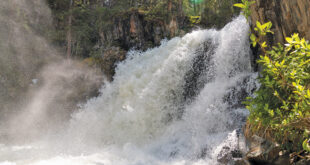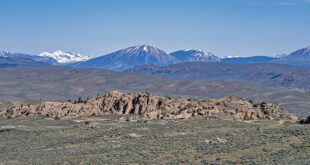This week, I started sifting through the 18 amendments that will face Colorado voters on November’s ballot and it quickly became clear that something is wrong.
I am a reasonably intelligent person but as I read through the ballot information provided on the Secretary of State’s website, I quickly became swamped in legalese. (You can read the ballot questions yourself starting on page 37.)
Some of the ballot questions seem purposefully crafted to misguide the reader—Amendment 46, the civil rights amendment? It’s actually intended to rid the state of affirmative action. No wonder citizens are disenchanted with the political process. For voters who simply walk into the ballot booth and read the questions, these are dangerous waters indeed.
In an effort to provide voters with a fair and balanced opinion, the state of Colorado commissions the Legislative Council staff to prepare Colorado’s blue book, or the Ballot Information booklet. The official booklet has not been released but a draft of it is available at http://www.state.co.us/gov_dir/leg_dir/lcsstaff/balpage.htm.
The website also outlines the careful process that the analysts walk through to shape the language that ends up in the book. Each blue book description goes through three revisions with all parties able to object to language. With so much legal wrangling around it, the blue book ends up as you’d expect—written by attorneys and so dry it’s difficult to comprehend.
That leaves the newspapers. One ballot initiative proponent told me this week that he’s spent decades in Colorado politics and he’s come to understand that there’s very little correlation between newspaper endorsement of candidates and who gets elected. However, there is a direct relationship between newspaper endorsements of ballot issues and how Colorado electors vote.
That’s because newspaper editors are the only ones with the time and patience to wade through the ballot language, online rhetoric and general mess to get to the bottom of each issue. Sometimes, editors do a good job and sometimes they don’t. The state is probably in its current fiscal tangle because editors were too quick to endorse quick fixes that some political think-tank cooked up in a back room.
The real question is how did we get here in the first place? Why does Colorado have 18 amendments before it?
I spoke with the folks at the Bell Policy Center, a progressive group on the Front Range, and they told me it’s because Colorado voters want it this way. Apparently our Western spirit means that we’d rather vote on each measure with our collective wisdom than trust our politicians to do the work for us—that’s generally the reason behind the Taxpayers Bill of Rights and a slew of other legislation.
One problem with this system is that we’ve made it incredibly easy to amend the state’s constitution, leading to an unwieldy document with conflicting sections. What to do? You guessed it. There’s an amendment, Referendum O, that’s designed to make our state’s guiding document harder to amend.
For this year, however, we’ll have to play with the cards we’re dealt.
To help our readers wade through their ballot, the News is launching its most comprehensive election coverage yet. We start out with the Know Your Vote section, which simplifies each amendment question, on page 14. Next week, we’ll feature the first installment of the five-week Meet the Candidates section that will introduce county commissioner candidates Hap Channell, Erich Ferchau, Doug Sparks and Paula Swenson. In addition, the Crested Butte News Election Guide will hit the streets on Thursday, October 16. Finally, mark your calendars for the News Candidates Forum, the last major commissioner debate before ballots are cast, on Sunday, October 19.
Don’t forget you have until Monday, October 6 to register to vote.
-Aleesha Towns
 The Crested Butte News Serving the Gunnison Valley since 1999
The Crested Butte News Serving the Gunnison Valley since 1999





